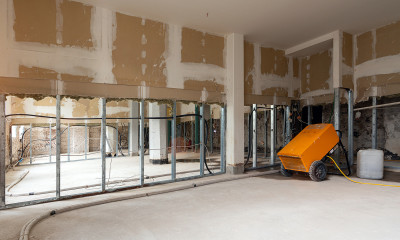Prepare Your Commercial Real Estate (CRE) for a Co-Working Future
Roughly 800 small businesses in the U.S. close their doors every day due to the impacts of COVID-19, striking a mean blow to the global economy. As we begin to move forward, commercial real estate (CRE) owners may want to consider adapting their rental space to be able to attract tenants by providing options for co-working and hybrid models.
At Jansen/Adjusters International, we know how much Commercial Real Estate (CRE) investors dread periods of unoccupancy; not only because of the loss of revenues and the ongoing utility and security costs, but also the increased risks associated with unoccupancy or vacancy such as fires or freezing pipes. It will be very difficult to refill the space quickly with tenants no longer requiring the traditional exclusive space that they rented previously; so this is a good time to pivot away from the norm and get a jump on the new co-working model that may be easier to lease.
The Benefits of Co-Working Spaces
Employers are ready to embrace hybrid staffing solutions thanks to more affordable real estate leases and shared/lowered utility costs. In 2021, many co-working employees will spend a portion of their workweek at home and attend staff meetings or customer meetings at a CRE office space designed to be shared with other organizations/tenants.
If some of your available space can become co-work compatible it may be the fastest way to see square footage become occupied again. And the good news is that shareable space can be leased to more organizations and used for more hours in a day. It has the potential to earn more and to reduce your risk. There will be a learning curve, of course, as CRE investors navigate the unfamiliar waters of co-work leases and sort out utility use of services and utilities.
Co-working CRE needs to be attractive to employers and their staffs. It needs to be functional, and most importantly be able to provide adequate social distancing. It must always be kept extra-clean and ready to take on the burden of more bodies, using more equipment, for longer hours.
Appealing to Hybrid/Co-Working Crews
A co-working space must be appealing to employees, organizations and their prospective customers. Aesthetics are important, but functionality is key!
The preferred co-working offices will surely have:
- Reliable high-speed internet, several provider options will be preferred
- Quality overhead lighting for evening meetings
- Updated electrical wiring — eventually, three or four short shifts will place a heavier burden on the wiring than a single eight-hour shift. Plenty of electrical outlets — to support desks, computers, printers, fans and task lighting
- A reliable and frequently serviced HVAC system
- A socially distant waiting area or lobby with access for handwashing
- A security presence
- And a professional cleaning service — scheduled regularly throughout the workweek during business hours, so everyone will be confident about the cleanliness of your property
Overall, we can expect changes in office design and layout too:
- Huge conference rooms are not as desirable nor are tiny offices that do not allow for social distancing
- Natural sunlight will be highly prized for its antimicrobial properties
- And workers will cherish the ability to take their duties outdoors
So, add a lovely pergola and picnic table to your lawn and shrubbery to your landscaping. Co-working employees will savor it this year.
Co-working and hybrid models for CRE can help your rental property become more attractive to potential tenants by providing the means to conduct business in a pandemic setting with the proper protocols in place.
For additional information on CRE, read our blogs on the topic here.








